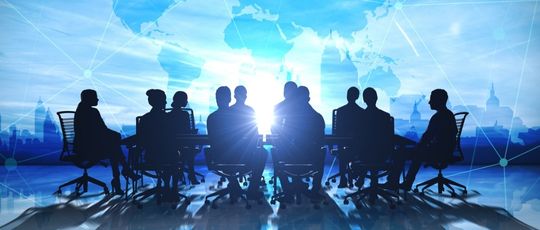- Many organizations are rethinking their job architecture. The survey found that 41% of organizations are currently updating or redesigning their job architecture program, with the majority indicating that it takes six to 12 months to complete.
- The number of job levels within job types. Overall, the typical number of job levels in executive/management was seven, professional/individual contributor classified job levels was six, and the technician and skilled trades was five and administrative support and clerical classified job levels was four.
- The elements of job-leveling guides. Over half (51%) of respondents indicated that they had criteria for using job titles. Typically, this involved using adjectives (associate, intermediate, senior, etc.) and ordinal numbers (1, 2, 3, etc.) to indicate job leveling for nonexecutive/management jobs (91%).
Given the internal and external pressures for fair and equal pay, transparency in pay decisions, and competitiveness in the market, more organizations have been turning to job architecture.
Definitions of leveling, job families, and consistent titling provide a framework to support internal and external communications for business operations and to promote trust in business practices and decision making.
Empsight International and Deloitte Consulting LLP’s recent “Global Job Architecture Practices Survey,” looked at the ongoing development and refinement of job architecture uses, design, tools and practices.
Definitions of leveling, job families, and consistent titling provide a framework to support internal and external communications for business operations and to promote trust in business practices and decision making.
Elements of Job Architecture Programs
More than one-third (41%) of responding organizations indicated they are currently updating or redesigning their job architecture program, with the majority indicating that it takes six to 12 months to complete. Implementers of job architecture programs report that their program is at least somewhat to very agile to meet their business needs (76%).

While reasons for taking on a job architecture project vary, the following are the primary drivers:
- Job structure/title practices
- Career pathing and talent development
- Pay program(s) assessment and alignment
- Minimal job architecture in place
- Workforce planning and human resources reporting
The number of job levels within job types (executive/management, professional/individual contributors, technician and skilled trades, and administrative support and clerical) varied by revenue size and industry.
Overall, the typical number of executive/management was seven, professional/individual contributor classified job levels was six, and the technician and skilled trades was five and administrative support and clerical classified job levels was four.
The guides to determine job leveling tend to be customized and created by or for the organization (47%). (See the chart below for common criteria used to create these guides.)
Elements of Job-Leveling Guides
More than half (51%) of respondents indicated that they had criteria for using job titles. Typically, this involved using adjectives (associate, intermediate, senior, etc.) and ordinal numbers (1, 2, 3, etc.) to indicate job leveling for nonexecutive/management jobs (91%). Global versus regional job titles are not generally used, nor are area/locational titles.

Increasing Interest in Job Architecture
Demonstrating the growth of using job architecture, the number of participants more than doubled from the prior 2020 survey. The participating organizations were evenly distributed across revenue size and industry but were heavily weighted toward for-profit organizations.
While 38% of the responding organizations operated in only one country, representation for the rest of the participants (42%) was somewhat balanced by category of the number of countries of operation. The survey is global, and 18% of the participant organizations are based outside the United States.
One measure to track if an organization could benefit from using job architecture or reviewing its compensation practices is to look at the number of distinct job titles it uses. Per the survey, below are these normative numbers for reference. The chart displays survey findings regarding the reported number of job titles an organization has categorized by headcount. The most prevalent response for each size category is highlighted.

While most responding organizations had an enterprise-wide approach to job architecture for most jobs (59%), elements that were a part of the job architecture program varied (see the table below). Most cited that programs tied to job leveling included base pay ranges, annual incentive eligibility and opportunities, long-term incentive eligibility and opportunities, and criteria/guidelines to enter a job level.
As significant growth continues in the use of job architecture, Deloitte has decided to change the survey frequency from every third year to evergreen. Participation is free, and participants have access to the latest results.
Editor’s Note: Additional Content
For more information and resources related to this article see the pages below, which offer quick access to all WorldatWork content on these topics:







